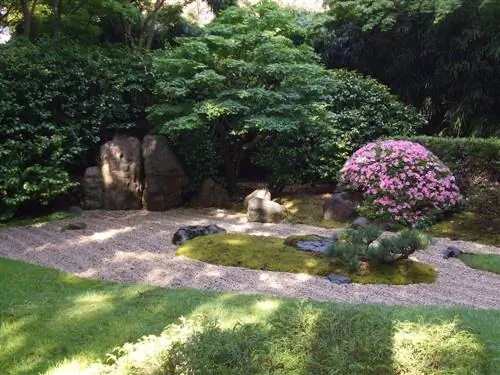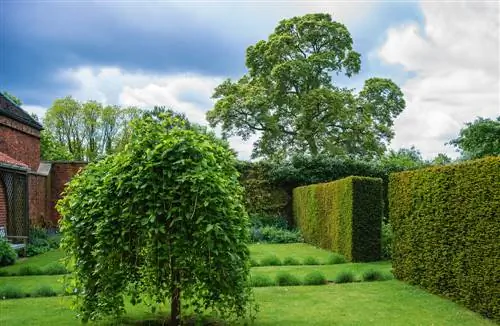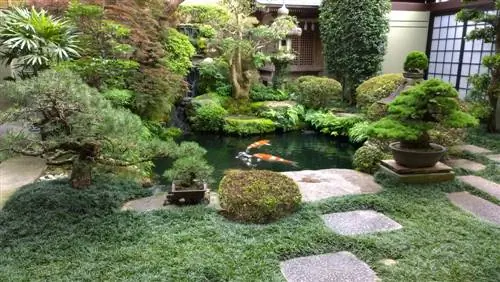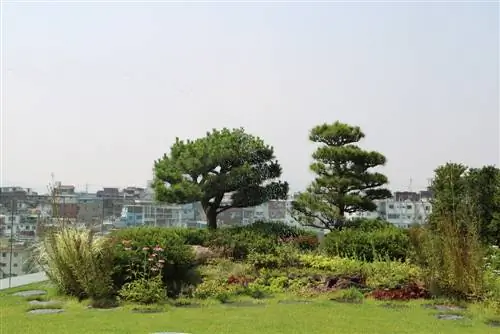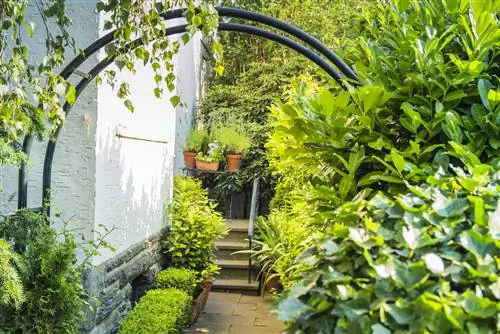- Author admin [email protected].
- Public 2023-12-16 16:46.
- Last modified 2025-06-01 06:02.
Purists with a penchant for Asian garden art create a Zen garden. The term translates to 'dry landscape' or 'dry garden'. In fact, this special form of the Japanese rock garden goes one step further in reducing it to the essentials. We would be happy to explain to you how to create an authentic Zen garden.
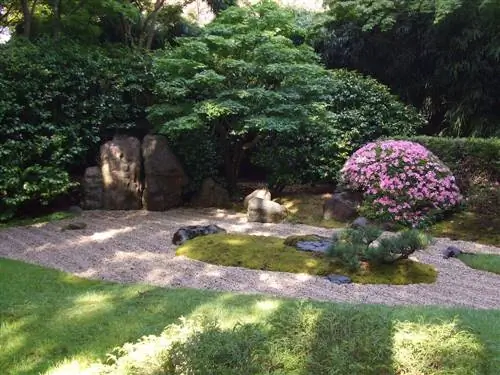
How do I create a Zen garden?
To create a Zen garden, first remove weeds and stones, dig the areas for gravel, sand and moss to a depth of 20 cm and lay out a weed fleece. Mark the areas and add plants, stones and decorations sparingly.
Composition of stones, gravel and moss - tips for planning
If you are aiming for a garden design that is true to the original according to the guidelines of Zen teachings, we recommend creating a detailed plan. A true-to-scale sketch determines the precise course of gravel beds, sand and moss areas. The position of boulders, stone garden figures and a stone bench are marked in the drawing.
The relationship between gravel, sand and moss areas is up to your individual decision. The only thing to note is that moss thrives primarily in partially shaded to shady, cool, moist locations. An important premise is the economical arrangement of decorations. In order for a Zen garden to exude meditative calm, it must not be overloaded.
Creating a Zen garden - this is how it works
Basically, you can create a Zen garden at any time, as long as the ground is not frozen. If you are planning a garden design with moss areas, we recommend the months of April to September. If you plant moss at this time, the spore plants will grow quickly and form dense carpets. How to proceed correctly step-by-step:
- Remove sod, weeds, stones and roots
- Dig out the designated areas for gravel, sand and moss to a depth of 20 cm
- Spread an air and water permeable weed fleece
- Mark the course of the different surfaces with strings and wooden sticks
As a substrate for moss plants, we recommend peat or rhododendron soil (€20.00 on Amazon) with a pH value below 6.0. Since gravel acts as a symbol of water in the Zen garden, we recommend a grain size of 4 to a maximum of 12 mm.
Allowed break in style - plants for the Zen garden
The origins of Zen teaching go back to the 6th century. Since then, Asian philosophy has gone through numerous changes and followed a variety of currents that tolerate the use of the following plants in horticultural interpretation:
- Garden bonsai, such as boxwood (Buxus), Japanese maiden pine (Pinus parviflora), Japanese yew (Taxus Cuspidata)
- Japanese holly (Ilex crenata), Japanese maple (Acer palmatum)
- Sacred bamboo (Nandina domestica, conditionally hardy), Japanese arrow bamboo (Pseudosasa japonica)
Plants with wasteful flowering periods are avoided in the Zen garden. Please arrange the recommended plant species and resulting varieties extremely sparingly. In a small garden there should be no more than two small specimens. For larger systems, use one large and two small plants in accordance with the guiding principles of Asian garden design.
Tip
The acceptance of Bosai trees in the Zen garden already suggests this. Wood in any form harmonizes perfectly with the strict garden style. An Asian pavilion is therefore a creative interpretation and stylish eye-catcher for the puristic dry garden.

